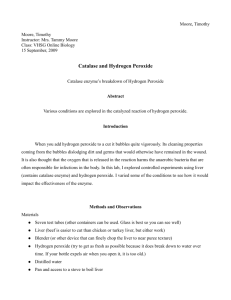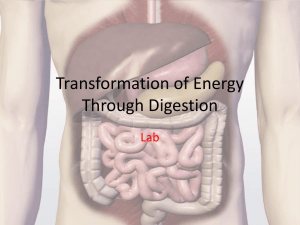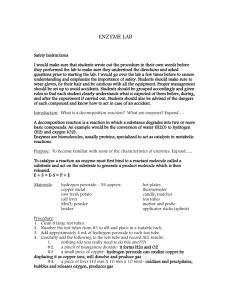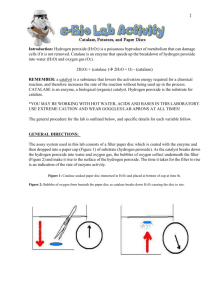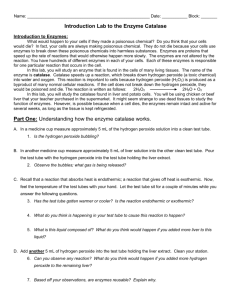Catalytic decomposition of Hydrogen Peroxide - MSP
advertisement
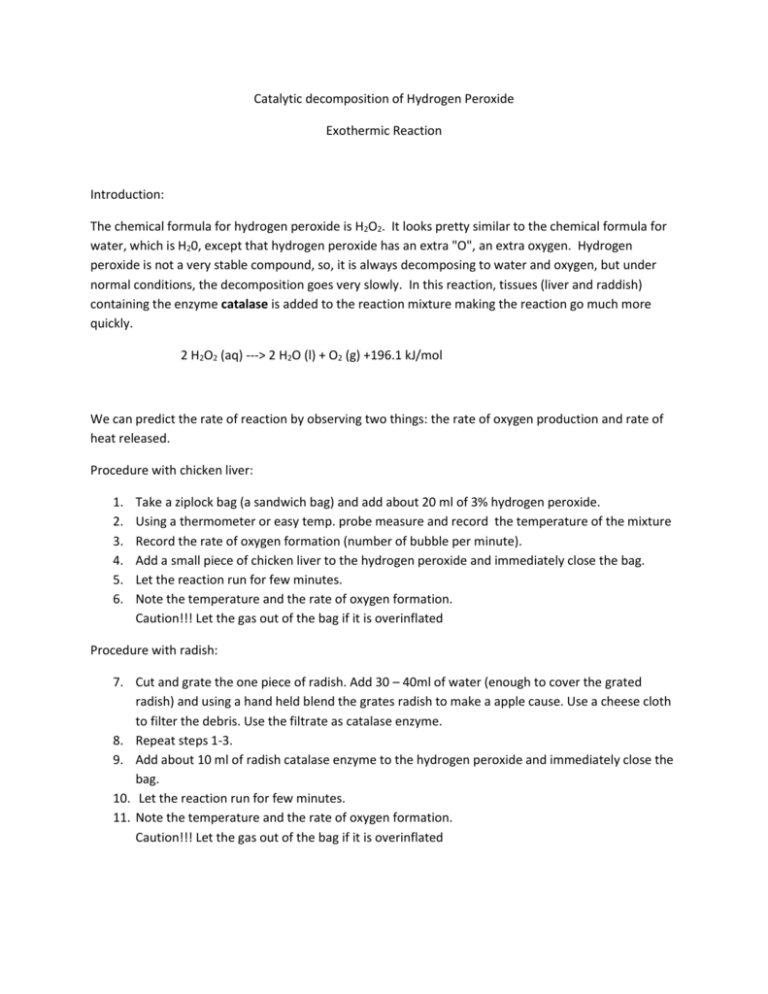
Catalytic decomposition of Hydrogen Peroxide Exothermic Reaction Introduction: The chemical formula for hydrogen peroxide is H2O2. It looks pretty similar to the chemical formula for water, which is H20, except that hydrogen peroxide has an extra "O", an extra oxygen. Hydrogen peroxide is not a very stable compound, so, it is always decomposing to water and oxygen, but under normal conditions, the decomposition goes very slowly. In this reaction, tissues (liver and raddish) containing the enzyme catalase is added to the reaction mixture making the reaction go much more quickly. 2 H2O2 (aq) ---> 2 H2O (l) + O2 (g) +196.1 kJ/mol We can predict the rate of reaction by observing two things: the rate of oxygen production and rate of heat released. Procedure with chicken liver: 1. 2. 3. 4. 5. 6. Take a ziplock bag (a sandwich bag) and add about 20 ml of 3% hydrogen peroxide. Using a thermometer or easy temp. probe measure and record the temperature of the mixture Record the rate of oxygen formation (number of bubble per minute). Add a small piece of chicken liver to the hydrogen peroxide and immediately close the bag. Let the reaction run for few minutes. Note the temperature and the rate of oxygen formation. Caution!!! Let the gas out of the bag if it is overinflated Procedure with radish: 7. Cut and grate the one piece of radish. Add 30 – 40ml of water (enough to cover the grated radish) and using a hand held blend the grates radish to make a apple cause. Use a cheese cloth to filter the debris. Use the filtrate as catalase enzyme. 8. Repeat steps 1-3. 9. Add about 10 ml of radish catalase enzyme to the hydrogen peroxide and immediately close the bag. 10. Let the reaction run for few minutes. 11. Note the temperature and the rate of oxygen formation. Caution!!! Let the gas out of the bag if it is overinflated Data table: Material Initial temp. (0C) Final temp. (0C) Difference in temp Ini# bubbles/min Final bubbles/min Conclusions Liver Radish Assessment: 1. 2. 3. 4. 5. What is the role of liver and radish in this reaction? What are the products of this reaction? Is this reaction exothermic or endothermic? Explain What evidence do you have that this was a chemical change and not a physical change? Can you find a way to identify the gas produced in this reaction?




